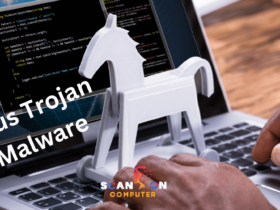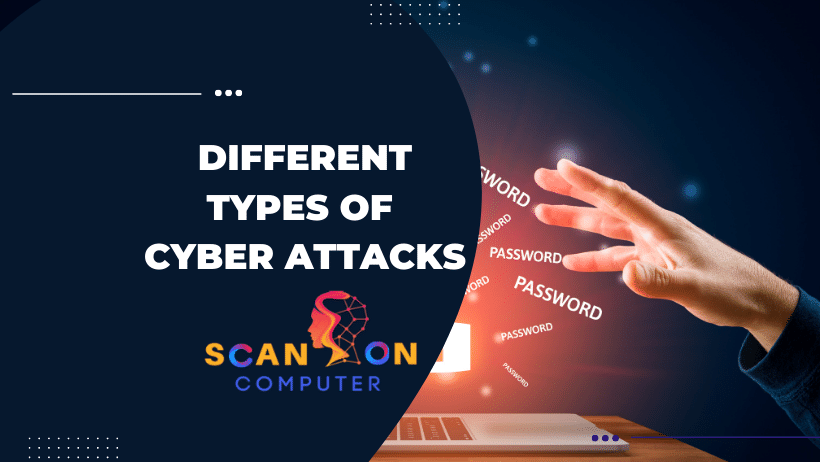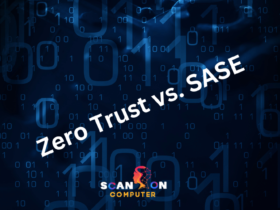Introduction: Why Understanding Cyber Attacks Matters
With cybercrime costs soaring and attack surfaces expanding, understanding the different types of cyber attacks is no longer optional—it’s mission-critical. The latest data shows that phishing, malware, and ransomware continue to rank among the top threats, but attackers are rapidly innovating, leveraging new technologies and social engineering tactics. CEOs, CISOs, IT specialists, and end-users all need to grasp the evolving landscape to mount effective defenses.
Top 10 Types of Cyber Attacks
Below is a table summarizing the most common—and dangerous—types of cyber attacks faced by organizations today.
| Attack Type | How It Works | Potential Impact | Example/Variant |
|---|---|---|---|
| Phishing | Deceptive emails/websites trick users into revealing secrets | Credential theft, malware, data loss | Spear phishing, smishing |
| Malware | Malicious software infects systems | Data breach, extortion, espionage | Virus, trojan, adware |
| Ransomware | Encrypts files; demands payment for unlock | Data loss, downtime, financial loss | CryptoLocker, WannaCry |
| Denial-of-Service (DoS) | Overwhelms servers with traffic | Service disruption, customer loss | DDoS, botnet |
| Man-in-the-Middle (MitM) | Intercepts or alters private communications | Data theft, sabotage, financial fraud | Eavesdropping, session hijack |
| SQL/Code Injection | Malicious code injected into databases/web apps | Data theft, site defacement, system access | SQLi, XSS |
| Zero-Day Exploits | Attacks unknown or unpatched software flaws | Full-system compromise, rapid spread | Zero-day malware |
| Credential-Based Attacks | Stolen/brute-forced passwords grant illicit access | Account takeover, financial fraud | Brute force, credential stuffing |
| Social Engineering | Psychological manipulation deceives users | Data leak, privilege abuse | Pretexting, baiting |
| Insider Threats | Employees or contractors misuse legitimate access | Data exfiltration, sabotage | Malicious insider |
-
Phishing Attacks
Phishing remains the most prevalent cyber attack. Attackers impersonate trusted entities—such as banks or colleagues—via email, SMS (smishing), or phone (vishing) to trick victims into handing over credentials or clicking malicious links. Spear phishing targets specific individuals, while whaling aims for high-profile executives.
Real-World Example: Phishers might create a convincing fake login page for an organizational portal, capturing usernames and passwords for later exploitation.
Prevention Tips:
- Educate staff to spot suspicious messages
- Implement email filtering and multi-factor authentication (MFA)
-
Malware Attacks
Malware is a broad category for malicious software: viruses, trojans, worms, spyware, and adware. Trojans disguise themselves as harmless software. Worms can self-propagate, and spyware silently collects user data.
Impact: Malware can harvest secrets, disable defenses, and open backdoors for ongoing access.
Prevention Tips:
- Regular security updates and patches
- Use endpoint protection and anti-malware tools
-
Ransomware Attacks
Ransomware encrypts organizational data and extorts a ransom in cryptocurrency to unlock it. Modern ransomware campaigns target backups, demand higher payments, and can cause massive business disruption. Ransomware-as-a-Service (RaaS) makes these tools accessible even to unskilled criminals.
Prevention Tips:
- Maintain regularly tested offline backups
- Employee awareness and restricted admin rights
-
Denial-of-Service (DoS/DDoS)
Denial-of-Service attacks flood networks or web applications with junk traffic, making them unavailable to real users. Distributed Denial-of-Service (DDoS) attacks use botnets for greater impact.
Impact: Downtime results in lost business, reputation damage, and remediation costs.
Prevention Tips:
- Employ DDoS mitigation services and robust network architecture
-
Man-in-the-Middle (MitM) Attacks
Attackers secretly intercept communication between two parties, capturing data or injecting malicious content. Common targets include unencrypted Wi-Fi networks and compromised routers.
Variants:
- Eavesdropping collects confidential data
- Session hijacking takes over online sessions
Prevention Tips:
- Use encryption (HTTPS, VPN)
- Avoid public Wi-Fi for sensitive transactions
-
SQL Injection & Code Injection
SQL injection exploits weaknesses in web applications, inserting unauthorized commands into databases. Other code injection methods, like Cross-Site Scripting (XSS), can hijack site behavior or steal user data.
Impact:
- Data breach, tampering, or defacement
Prevention Tips:
- Secure code audits, regular vulnerability scans, and input validation
-
Zero-Day Exploits
Zero-day attacks leverage previously unknown software vulnerabilities—often before a fix is available. With threat actors using AI to rapidly develop new exploits, these are among the hardest attacks to defend against in 2025.
Action:
-
- Practice strong patch management
- Invest in behavior-based detection and threat intelligence
-
Credential-Based Attacks
Attackers steal or guess credentials to gain unauthorized access. Techniques include brute force attacks, credential stuffing (trying stolen credentials across multiple sites), and exploiting weak password policies.
Prevention:
- Encourage unique, strong passwords
- Deploy MFA
- Monitor for unusual account activity
-
Social Engineering
These attacks exploit human nature rather than software flaws. Attackers use tactics like pretexting (posing as a trusted official), baiting (leaving malware-laden media in public), or quizzing victims for confidential information.
Prevention:
- Run regular security awareness training
- Set clear protocols for sensitive requests
-
Insider Threats
Your own employees, contractors, or suppliers can accidentally or maliciously cause breaches. With remote work and cloud sharing on the rise, insider threats are harder to detect and stop than ever.
Mitigation:
- Monitor sensitive data access
- Use least-privilege principles and data loss prevention tools
Emerging Attack Variants to Watch
AI-Driven Attacks
AI and machine learning are now used by attackers to develop polymorphic malware, automate phishing, and find new vulnerabilities at scale. Defenders must counter with AI-driven detection and rapid response capabilities.
5G and IoT Vulnerabilities
The proliferation of connected devices (IoT) and faster 5G networks introduce new vulnerabilities, especially as traditional network perimeters vanish. Compromised IoT devices can form massive botnets or be weaponized in targeted attacks.
Supply Chain Attacks
Threat actors increasingly target suppliers and software vendors to reach larger organizations. A single compromised partner can expose hundreds of businesses downstream.
How to Defend Against Cyber Attacks (Actionable Tips)
-
Security Awareness Training:
-
- Make training a regular practice, including phishing simulations.
- Teach employees how to identify suspicious links, attachments, and requests.
-
Strong Access Control:
-
- Implement multi-factor authentication (MFA) for all accounts.
- Regularly update and audit user permissions.
-
Patching and Updates:
-
- Apply security patches promptly for OS, applications, and firmware.
-
Backups and Disaster Recovery:
-
- Maintain encrypted, offline backups.
- Test restore procedures regularly.
-
Advanced Threat Detection:
-
- Employ endpoint protection platforms (EPP/EDR), SIEM, and network monitoring.
-
Incident Response Planning:
-
- Build and rehearse a detailed incident response plan.
- Define roles, communication channels, and third-party contacts (like legal or PR).
-
Secure Configuration:
-
- Disable unused services, close unnecessary ports, and use secure defaults.
- Review firewall, router, and application settings.
Conclusion: Building a Resilient Cybersecurity Posture
The landscape of cyber attacks is dynamic—and daunting—but organizations that invest in robust prevention, detection, and response strategies can significantly reduce risk. Executives must champion a security-first culture, invest in upskilling teams, and take a proactive approach to continuous improvement. Are you ready to lead your organization toward cyber resilience?
FAQ: Different Types of Cyber Attacks
- What are the most common types of cyber attacks?
Phishing, malware, ransomware, DDoS, and man-in-the-middle (MitM) attacks are the most common types of cyber attacks faced by organizations and individuals in 2025. - How does a phishing attack work?
Phishing uses deceptive emails, texts, or calls to trick users into revealing sensitive information or clicking malicious links. Spear phishing targets specific users, while whaling targets executives. - What makes ransomware so damaging?
Ransomware encrypts critical files and demands payment for their release. Victims often face data loss, operational downtime, and reputational impact. - How can organizations prevent DDoS attacks?
By deploying DDoS mitigation services, designing scalable architectures, and monitoring network traffic for anomalies. - What is a zero-day exploit?
A zero-day exploit targets vulnerabilities unknown to the software vendor and public, making defenses difficult until a patch is released. - Are insider threats a bigger risk now?
Yes—hybrid work, increased cloud usage, and complex supply chains have made detecting and preventing insider threats more challenging than ever. - What’s the difference between malware and ransomware?
Malware is a general term for malicious software (like viruses or trojans). Ransomware is a type of malware that encrypts data and demands a ransom. - Why is employee training essential in cybersecurity?
Humans are often the weakest link; regular training fosters vigilance, reducing successful phishing and social engineering attacks.
Ready to strengthen your cyber defenses? Start with a security assessment and develop a roadmap that addresses your organization’s unique risks. Prioritize awareness, layered controls, and continuous improvement. Got questions, or need a deeper dive? Contact our cybersecurity experts today!













Leave a Reply
View Comments